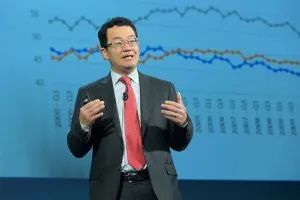
Agents, brokers, association executives and industry specialists from around the globe will converge in Houston in November to build their network and grow their business in other markets, regions, states or even internationally.
This year, NAR NXT, The REALTOR® Experience is highlighting the strong partnership that exists between Mexico- and U.S.-based real estate professionals and the importance of cross-border investment among U.S. and Mexican buyers:
- At a Spanish-language session experts will share how to maximize business opportunities in Mexico’s real estate market and share practical tips that agents and brokers can deploy.
- Several local developers will join the Mexico booth at NXT to present investment projects and second homes. A ribbon-cutting ceremony will inaugurate the booth on Friday, Nov. 14.
Mexico's active participation at NAR NXT acknowledges the significant investment occurring between citizens on both sides of the border.
The Numbers Don’t Lie: Pesos Are Pouring Into U.S. Real Estate
America’s housing market gets a major boost from foreigners who last year purchased 78,100 existing homes for $56 billion, according to NAR research. That’s roughly 2.5% of the dollar volume of existing homes sold last year.
Mexico placed third among top foreign buyers, spending $4.4 billion. What’s more, in 49% of the transactions, Mexican buyers are coming to the table with all-cash offers.
The reasons behind the trend are a mix of personal, professional and financial, Mexico’s real estate trade association explains.
“Many families have relatives, business interests or children studying in the U.S., which creates a natural demand for residential property,” Asociación Mexicana de Profesionales Inmobiliarios (AMPI)’s President Karim Antonio Oviedo Ramírez says. “The growth of Mexico’s middle and upper-middle class has also fueled this trend, as more investors look to diversify and protect wealth in dollars through the stability of the U.S. housing market. Geographic proximity makes travel, property management and relocation easier compared to buyers from other regions.”
More than anywhere else, they’re investing in Texas.
Mexican Buyers and the Lone Star State
The Lone Star state isn’t very lonely—it’s getting a lot of love from Mexico. In fact, out of those Mexicans purchasing property in the U.S., four out of every 10 are choosing Texas.
That shouldn’t come as too much of a surprise, as Texas is infused with Mexican culture, take for example Tex-Mex cuisine.
For centuries Texas was a part of Mexico, which was itself a Spanish colony for 300 years. In 1821, Mexico gained its independence from Spain, and then Texas declared its independence from Mexico, only to be annexed by the U.S. in 1845.
“We are close to the border,” says Brenda Taylor, an agent with RE/MAX Dallas Suburbs.
Taylor grew up in Acapulco, Mexico, and has lived in Dallas for about 30 years.
“What drove me to Texas was it was very [similar culturally], very family oriented. So, that was very easy [for me] to adapt.” Another draw, she says: Many people in Texas speak Spanish.
“Even though many of my clients already speak English, sometimes it's [more] comfortable to find somebody to do business in your own language,” she says.
In Texas about 29% of those ages 5 and older speak Spanish at home, according to federal estimates.
Oviedo agrees with Taylor but also notes Texas’s track record as an economic engine.
“Texas leads the U.S. in job creation, is experiencing rapid population growth, and is home to many Fortune 500 companies,” he says.
In fact, foreign investment is supercharging Texas's local economy. The Bureau of Economic Analysis, within the U.S. Department of Commerce, found that 18,200 new jobs were created in 2024 from new foreign-backed projects. When global companies set up shop, they create a demand for land, buildings, housing and economic growth. Read the full analysis from NAR Research.
A Two-way Street: U.S. Invests in Mexico
On the flip side, Mexico is the number one destination for Americans looking to purchase property abroad—and it has been for at least a decade.
“These investment flows go both ways, and Americans see the value in diversifying their real estate investments into other markets,” Matt Christopherson, NAR Director of Business and Consumer Research, says. “With Mexico, they often gain a vacation home or investment property that’s easy to access while widening their exposure to different markets, often with a lower price tag.”
In the early 1990s, purchasing property in Mexico became a lot easier for Americans. A law that had prevented foreigners from buying homes too close to the coastline or border was amended to allow purchases, done through a Mexican bank trust, in the “restricted zone.”
“The legal framework for foreign ownership—through bank trusts (fideicomisos) or Mexican corporations—is now well established, giving U.S. buyers confidence and security in their investments,” Oviedo says.
Taylor says it’s not only vacationers and retirees looking to purchase homes in Mexico, but business owners. She says the trend of “nearshoring,” bringing manufacturing closer as opposed to “offshoring,” is affecting real estate there.
“Mexico is close; it's cheaper to rent warehouses, industrial parks [and] offices and then be near the end user, which is [the] United States,” she says.
One Agent’s Experience With Mexican Buyers
Expanding globally has served Taylor well. She says 75% of her business is inbound referrals from people across the globe—Mexican, Indian, Colombian—coming to Dallas.
Her referrals come from agents abroad or other clients.
In addition to being an NAR member and global ambassador, Taylor is an AMPI member and Certified International Property Specialist (CIPS) instructor.
“One thing that I always tell the students is you need to know the culture,” she says.
Taylor’s currently working with three different clients either living in Mexico now or recently immigrated to the U.S.
She says there are cultural nuances between the U.S. and Mexico in terms of how they approach business: “The difference in the United States is ‘let's do business and then let's do networking. I'm going to separate friendship with business.’ In Mexico, you do friendship first and then you do business. They don't do business with people they don't know and trust.”
Taylor says you’ll also find cultural differences between people from various parts of the country, like how you’d expect idiosyncrasies between someone from New York, California or Texas.
“Mexico is so diverse that you need to understand who you're talking to, but in general, Mexican people are very relaxed,” she says. “Once they get to know you, they're very faithful in business. They bring you business from their friends, from their family; they will bring their own kids. I am working now with third generations.”
Trade Groups Mirror Strong Partnership
To help members foster international business opportunities, NAR dedicates substantial time and effort in identifying real estate organizations worldwide that share its commitment to ethical practices, professionalism and a comprehensive understanding of the real estate profession. NAR has established relationships in 78 countries.
NAR and AMPI have been strong bilateral partners for decades.
“Through AMPI, NAR members gain access to a trusted network of vetted professionals in Mexico who understand the local market, regulations and cultural practices,” Oviedo says. “This makes cross-border referrals smoother and more reliable, opening new business opportunities for professionals on both sides.”
Just as an AMPI delegation plans to attend NAR NXT, last month NAR representatives, including Taylor, attended AMPI’s largest annual conference in Chihuahua, Mexico.
Another example of the pair’s close connection is NAR’s global technology accelerator program REACH. Its Latin America program, REACH LATAM, is headquartered in Monterrey, Mexico.
What’s more, many Mexican real estate professionals have chosen to become NAR members. In fact, the number of International REALTOR® members who hail from Mexico is second only to the number from Canada. International REALTOR® members gain access to the REALTOR® logo and trademark, marketing assets, .Realtor domains and more.
With that in mind, NAR continues to invest in making its brand a destination for Spanish speakers. Since 2020, it has maintained NAR en Español, a website packed with Spanish-language resources for NAR members. In addition, to support members working with Spanish-speaking clients, the association publishes consumer guides in both English and Spanish. The guides, available at facts.realtor, help agents and brokers demystify the home buying and selling process. A new guide is published every two weeks.
For anyone interested in attending NAR NXT, The REALTOR® Experience in Houston, there’s still time to register either online or in-person, on-site. Go to narnxt.realtor for more information.











